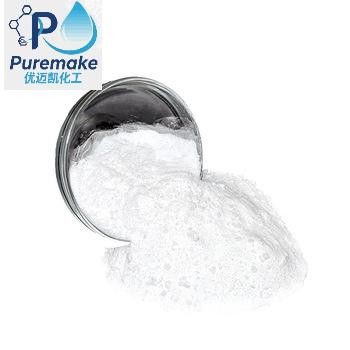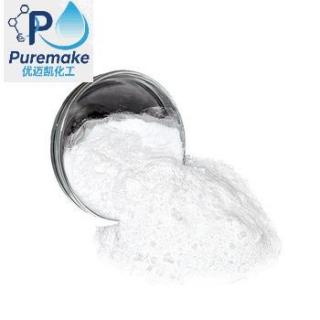Introduction
4-Amino-3-phenylbutanic acid hydrochloride Phenibut Powder 1078-21-3 (contracted from β-phenyl-γ-aminobutyric acid) is a central nervous system (CNS) depressantand derivative of the naturally occurring inhibitory neurotransmitter γ-aminobutyric acid (GABA). Phenibut is sold as a nutritional supplement, and is not approved as a pharmaceutical in the United Statesor Europe, but in Russiait is sold as a psychotropic drug. It has been reported by some to possess nootropicactions for its ability to improve neurological functions, but other researchers have not observed these effects. It is generally accepted that phenibut has anxiolyticeffects in both animal models and in humans. Phenibut was discovered in the Soviet Unionin the 1960s, and has since been used there to treat a wide range of ailments including post-traumatic stress disorder, anxiety, and insomnia.

Main Function
1.Phenibut Powder 1078-21-3 is a derivative of the naturally occurring inhibitory neurotransmitter GABA.
2.Phenibut is used by bodybuilders to reduce fatigue and improve neurological functions.
3.It is still used medically to treat stress, relieve tension, improve sleep, and as a potentiate for other medications.
Application
Phenibut Powder 1078-21-3 can be widely used in Intermediate and pharmaceuticla products.


Specification
Parameters | Specification |
Appearance | White crystalline powder without mechanical impurities |
Solubility | Easy soluble in water, soluble in 96% ethanol, practically insoluble in acetone |
Identity (IR-spectrum) | Conforms to structure and standard |
Loss on Drying, % | ≤ 0,5 |
Clarity of solution | A liquid (1.0 g in water R) is considered clear if its clarity is the same as that of water R or if its opalescence is not more pronounced than that of reference suspension I |
Colorations of solution | A solutionis (1.0 g in water R) colourless if it has the appearance of water R or the solvent or is not more intensely coloured than reference solution B9 |
рН | 2,3 – 2,7 |
Residue on ignation (as sulphate ash), % |
≤0,1 |
Assay, % | 99,0 - 101,0% |
Melting range, 0С | 194 - 202 |
heavy metals, % | ≤0,005 (10 ppm) |
Iron, % | ≤0,001 (50 ppm) |
Flow Chart
1) Put in benzoic acid, methanol, and nitromethane, keep it warm at 18°C for 10 hours, cool and crystallize to 5°C, and separate the solid and liquid, and dry to obtain nitrostyrene; 2) Combine the dried nitrostyrene and Put diethyl malonate into the methanol solution, raise the temperature to 45°C and keep it warm for 2 hours, stir and react to generate α-carbomethoxy-β-phenyl-г-nitrobutyric acid methyl ester, then add Ni and H2, Keep the temperature at 50°C and the pressure at 4MPa to carry out hydrogenation, and react for 12 hours to obtain a-carbomethoxy-β-phenyl-г-tetrahydropyrrolidone; 3) a-carbomethoxy-β-phenyl- г-Tetrahydropyrrolidone is heated to 80°C, hydrochloric acid is added dropwise for hydrolysis, and the reaction is stopped after the pH value reaches 4. The reaction time is three to five hours, and 4-amino-3-phenylbutyric acid hydrochloride is obtained. After drying That is, 4-amino-3-phenylbutyric acid hydrochloride product.

Test Method
4-Amino-3-phenylbutanic
4-Amino-3-phenylbutanic acid hydrochloride
1 Name
1.1Name of Product::4-Amino-3-phenylbutanic acid hydrochloride;PHENIBUT;PHENYBUT
1.2Code no.:PABA
1.3Chemical Name(s):
4-Amino-3-phenylbutanic acid hydrochloride
2 Structure
CioH13NO2.HCL 215.68
3 Specification
Item | Specification |
Appearance | Almost white crystal or crystalline powder |
ldentification | 1.2(+) |
Relative material% | ≤0.1 |
Melting point | 194~202℃ |
PH | 2.3-2.7(2.5%water solution) |
Clarity of solution | ≤1* |
Iron% | ≤0.005 |
Loss on drying % | ≤0.5 |
Residue onignition % | ≤0.1 |
Heavy metals ug/g | ≤10 |
Assay % | ≥99.0 |



